Countries Rely On Tourism as a vital economic driver, especially those with stunning natural beauty and unique cultural experiences. If you’re planning a trip to Vietnam and want to make the most of your adventure, SIXT.VN offers a seamless travel experience, ensuring you discover the best of this vibrant country. Explore Vietnam’s attractive destinations, boost local economics, and get unforgettable journey, as it benefits the economy and offers a rich cultural experience.
1. Understanding the Reliance on Tourism
Tourism significantly contributes to the economies of many nations, acting as a key source of income, employment, and foreign exchange. The dependence on tourism is particularly pronounced in countries with limited natural resources or industrial capacity. According to the World Tourism Organization (UNWTO), international tourism generated over $1 trillion in revenue in 2022, showcasing its substantial economic impact.
1.1. What factors make countries reliant on tourism?
Several factors contribute to a country’s reliance on tourism:
- Natural Attractions: Countries with abundant natural attractions such as beaches, mountains, and national parks often rely heavily on tourism. These destinations draw visitors seeking recreation, adventure, and relaxation.
- Cultural Heritage: Countries with rich cultural heritage, historical sites, and unique traditions attract tourists interested in exploring and experiencing different cultures.
- Climate: Favorable climates, particularly those offering warm weather and sunshine, make certain countries popular tourist destinations year-round.
- Economic Structure: Nations with smaller, less diversified economies often depend on tourism as a primary source of income and employment.
- Infrastructure: Well-developed tourism infrastructure, including airports, hotels, and transportation networks, facilitates tourism and enhances a country’s reliance on it.
1.2. How do countries benefit from tourism revenue?
Tourism revenue provides numerous benefits to countries that heavily rely on it:
- Economic Growth: Tourism stimulates economic growth by generating income for businesses, creating jobs, and attracting investment in infrastructure and services.
- Foreign Exchange Earnings: Tourism is a significant source of foreign exchange earnings, which can be used to finance imports, repay debts, and support economic development.
- Employment Opportunities: The tourism sector provides a wide range of employment opportunities, from hotel staff and tour guides to restaurant workers and transportation providers.
- Infrastructure Development: Tourism often leads to investment in infrastructure development, such as airports, roads, and utilities, which can benefit local communities and businesses.
- Cultural Preservation: Tourism can promote the preservation of cultural heritage and traditions, as destinations strive to maintain their unique identity to attract visitors.
2. Top Countries Reliant on Tourism
Several countries heavily depend on tourism for a significant portion of their GDP. These nations often feature unique attractions, stunning landscapes, and thriving tourism industries.
2.1. What are the top 10 countries most reliant on tourism?
In 2022, the top 10 countries most reliant on tourism as a percentage of their GDP were:
| Rank | Country | Tourism Revenue as % of GDP |
|---|---|---|
| 1 | Maldives | 68% |
| 2 | Antigua and Barbuda | 55% |
| 3 | Seychelles | 23.1% |
| 4 | Jamaica | 23.1% |
| 5 | Belize | 20.3% |
| 6 | Croatia | 18.9% |
| 7 | Montenegro | 18.2% |
| 8 | Barbados | 16.2% |
| 9 | Albania | 16.2% |
| 10 | Fiji | 14.33% |
2.2. What makes the Maldives so reliant on tourism?
The Maldives, an archipelago of 1,190 small islands in the Indian Ocean, relies heavily on tourism, which contributed 68% to its GDP in 2022. Several factors contribute to this dependence:
- Stunning Natural Beauty: The Maldives is renowned for its pristine beaches, crystal-clear waters, and vibrant coral reefs, making it a highly sought-after destination for beach lovers and water sports enthusiasts.
- Luxury Resorts: The Maldives boasts a collection of luxurious resorts and overwater bungalows, catering to affluent travelers seeking exclusive and unforgettable experiences.
- Unique Geography: The unique geography of the Maldives, with its numerous small islands and atolls, lends itself to tourism development, offering a sense of seclusion and tranquility.
- Year-Round Warm Weather: With temperatures ranging between 25 and 35 degrees Celsius throughout the year, the Maldives offers a tropical climate that attracts tourists year-round.
- Economic Focus: The Maldives has strategically focused on developing its tourism sector, attracting foreign investment, and promoting sustainable tourism practices.
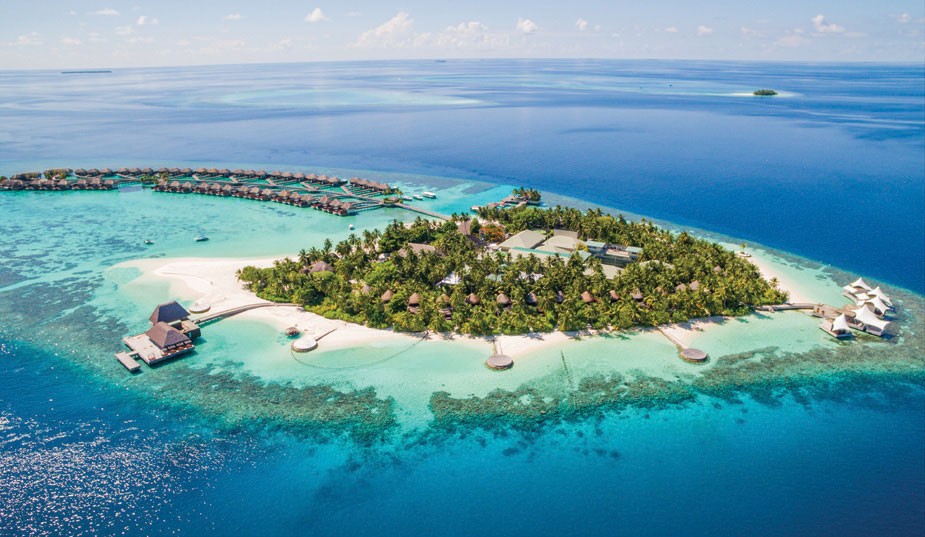 Maldives Beach
Maldives Beach
The Maldives’ stunning beaches and luxury resorts attract high-spending tourists.
2.3. What are the key attractions in Antigua and Barbuda?
Antigua and Barbuda, an island nation in the Caribbean, relies on tourism for 55% of its GDP. The key attractions include:
- Beautiful Beaches: With its numerous pristine beaches, Antigua and Barbuda is a popular destination for sunbathing, swimming, and water sports.
- Yachting and Sailing: The islands are a hub for yachting and sailing, attracting visitors who enjoy exploring the Caribbean Sea and its picturesque harbors.
- Historical Sites: Antigua and Barbuda features historical sites such as Nelson’s Dockyard, a UNESCO World Heritage Site, which provides insights into the islands’ colonial past.
- Luxury Resorts: The islands offer a range of luxury resorts and boutique hotels, catering to discerning travelers seeking high-end accommodations and personalized service.
- National Parks: Much of the country’s territory is covered by national parks, offering opportunities for hiking, birdwatching, and wildlife spotting.
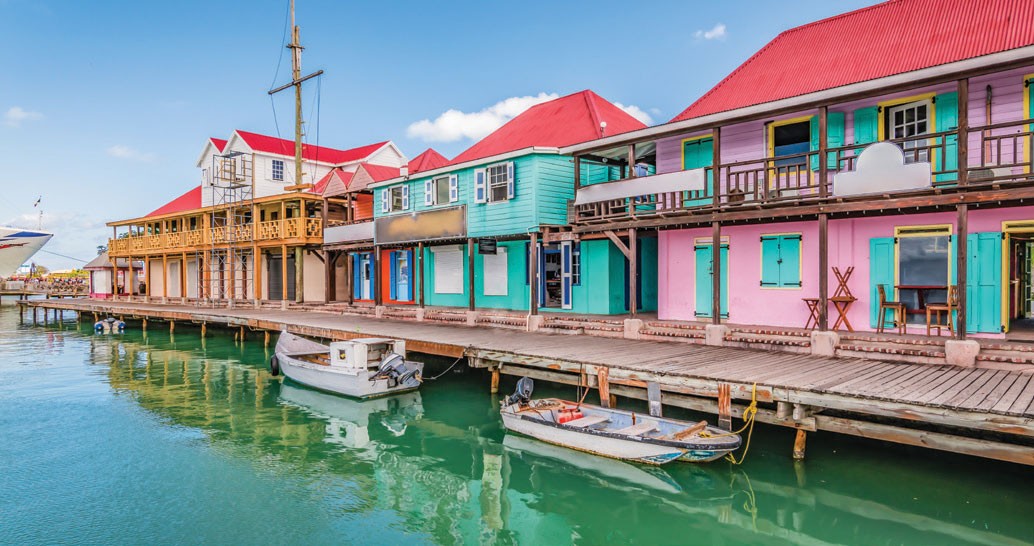 Antigua Beach
Antigua Beach
Antigua and Barbuda’s idyllic beaches and historical sites draw tourists from around the globe.
3. Regional Analysis of Tourism Dependence
The dependence on tourism varies across different regions, reflecting the unique characteristics and attractions of each area.
3.1. How do Caribbean countries rely on tourism?
Caribbean countries often rely heavily on tourism due to their:
- Tropical Climate: The warm, sunny climate of the Caribbean attracts tourists seeking beach vacations and water sports activities.
- Island Setting: The island setting of many Caribbean nations offers a sense of seclusion and natural beauty, attracting visitors looking for a relaxing escape.
- Diverse Culture: The Caribbean boasts a rich and diverse culture, blending African, European, and indigenous influences, which is reflected in its music, cuisine, and traditions.
- Cruise Tourism: The Caribbean is a major hub for cruise tourism, with numerous cruise ships visiting the islands each year, contributing significantly to local economies.
- Economic Factors: Many Caribbean countries have small, undiversified economies, making them reliant on tourism as a primary source of income and employment.
3.2. How do Balkan countries leverage tourism for economic growth?
Balkan countries have increasingly leveraged tourism for economic growth, driven by:
- Affordable Travel: The Balkan region offers relatively affordable travel options compared to other parts of Europe, attracting budget-conscious travelers.
- Rich History and Culture: The Balkans are steeped in history and culture, with numerous ancient cities, medieval castles, and UNESCO World Heritage Sites to explore.
- Diverse Landscapes: From the Adriatic coastline to the Dinaric Alps, the Balkans offer a diverse range of landscapes, catering to different interests and activities.
- Growing Infrastructure: The tourism infrastructure in the Balkans has been steadily improving, with new hotels, airports, and transportation networks enhancing the visitor experience.
- Strategic Location: The strategic location of the Balkans, at the crossroads of Europe and Asia, makes it an accessible destination for travelers from around the world.
3.3. How does Southeast Asia benefit from tourism?
Southeast Asia has emerged as a major tourism hub, driven by:
- Cultural Richness: Southeast Asia boasts a rich tapestry of cultures, with ancient temples, bustling markets, and vibrant festivals attracting tourists from around the globe.
- Affordable Prices: The region offers affordable travel options, making it a popular destination for budget travelers and backpackers.
- Stunning Landscapes: From the beaches of Thailand to the rice terraces of Vietnam, Southeast Asia offers a diverse range of landscapes, catering to different interests and activities.
- Delicious Cuisine: Southeast Asian cuisine is renowned for its flavors, spices, and culinary traditions, attracting food lovers from around the world.
- Growing Infrastructure: The tourism infrastructure in Southeast Asia has been rapidly expanding, with new airports, hotels, and transportation networks improving connectivity and accessibility.
4. The Impact of Tourism on Local Communities
Tourism has a profound impact on local communities, bringing both opportunities and challenges.
4.1. What are the positive impacts of tourism on local communities?
The positive impacts of tourism on local communities include:
- Job Creation: Tourism generates employment opportunities in various sectors, such as hospitality, transportation, and entertainment, providing income and livelihoods for local residents.
- Economic Development: Tourism stimulates economic development by generating income for businesses, attracting investment in infrastructure and services, and promoting entrepreneurship.
- Cultural Preservation: Tourism can promote the preservation of cultural heritage and traditions, as destinations strive to maintain their unique identity to attract visitors.
- Infrastructure Development: Tourism often leads to investment in infrastructure development, such as roads, utilities, and public services, which can benefit local communities and businesses.
- Community Empowerment: Tourism can empower local communities by providing opportunities for participation in decision-making processes, promoting cultural exchange, and fostering a sense of pride and identity.
4.2. What are the negative impacts of tourism on local communities?
The negative impacts of tourism on local communities include:
- Environmental Degradation: Tourism can contribute to environmental degradation through pollution, deforestation, and overuse of natural resources, threatening ecosystems and biodiversity.
- Cultural Commodification: Tourism can lead to the commodification of culture, with traditions and practices being altered or commercialized to cater to tourist demands, eroding authenticity and cultural integrity.
- Economic Leakage: A significant portion of tourism revenue may leak out of local communities, as multinational corporations and foreign investors capture profits, limiting the economic benefits for local residents.
- Social Disruption: Tourism can disrupt social structures and values, leading to increased crime, prostitution, and substance abuse, particularly in vulnerable communities.
- Overcrowding and Congestion: Popular tourist destinations often suffer from overcrowding and congestion, straining infrastructure and resources and diminishing the quality of life for local residents.
4.3. How can sustainable tourism practices mitigate negative impacts?
Sustainable tourism practices can mitigate the negative impacts of tourism on local communities by:
- Promoting Responsible Travel: Encouraging tourists to travel responsibly by respecting local cultures, minimizing environmental impact, and supporting local businesses.
- Engaging Local Communities: Involving local communities in tourism planning and decision-making processes, ensuring that their voices are heard and their interests are considered.
- Supporting Local Businesses: Encouraging tourists to patronize local businesses, such as restaurants, shops, and tour operators, ensuring that tourism revenue benefits local communities.
- Implementing Environmental Protection Measures: Implementing environmental protection measures, such as waste management programs, water conservation initiatives, and protected areas, to minimize the environmental impact of tourism.
- Investing in Education and Training: Investing in education and training programs for local residents, providing them with the skills and knowledge needed to participate in the tourism sector and benefit from its economic opportunities.
5. Case Studies: Tourism Success Stories
Several countries have successfully leveraged tourism to drive economic growth and improve the quality of life for their citizens.
5.1. How has Croatia capitalized on its coastal tourism?
Croatia has successfully capitalized on its coastal tourism, transforming itself into a popular destination for beach lovers, history buffs, and culture enthusiasts. With its 1,800 km coastline along the Adriatic Sea, Croatia offers:
- Historical Monuments: The country is known for its historical monuments and architecture, including the Old Town of Dubrovnik, a UNESCO World Heritage Site, which attracts visitors from around the world.
- Game of Thrones Effect: The filming of several episodes of the popular TV series Game of Thrones in Dubrovnik has further boosted the city’s appeal to tourists, increasing its visibility and popularity.
- Yachting and Sailing: Croatia is a popular destination for yachting and sailing, with numerous marinas and harbors along its coastline catering to boaters and sailors.
- Festivals and Events: The country hosts a variety of festivals and events throughout the year, attracting visitors interested in music, culture, and entertainment.
- Strategic Investment: Croatia has strategically invested in its tourism infrastructure, developing new hotels, resorts, and transportation networks to accommodate the growing number of visitors.
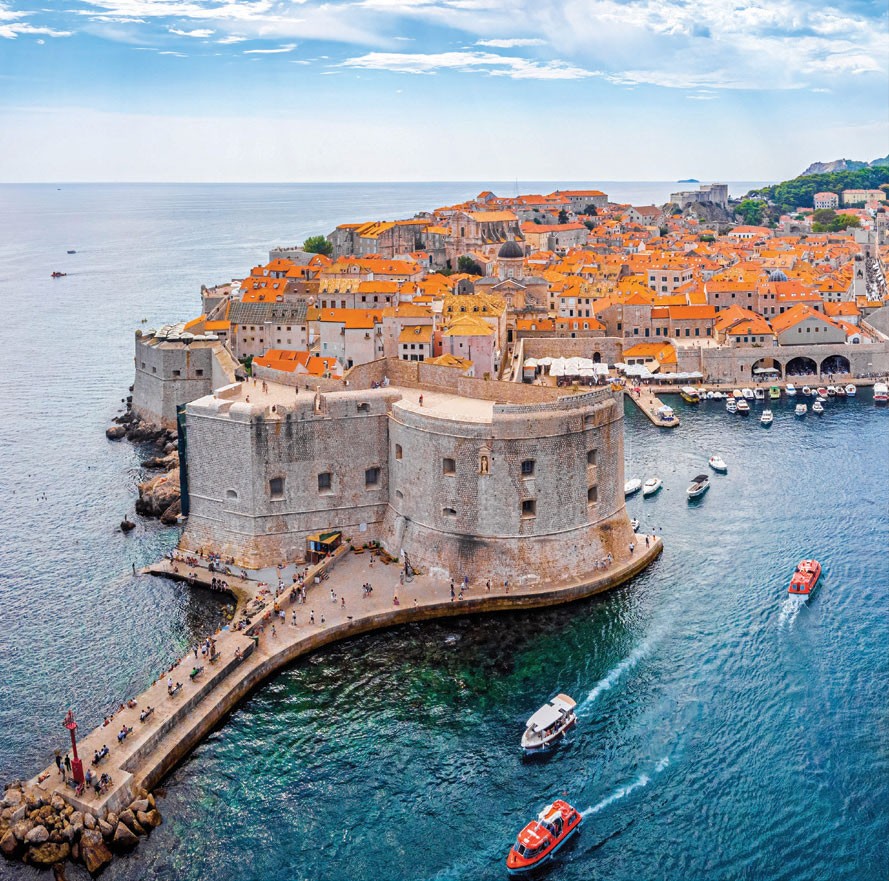 Croatia Dubrovnik
Croatia Dubrovnik
Dubrovnik, Croatia’s historic city, has seen a boom in tourism thanks to its stunning architecture and Game of Thrones fame.
5.2. How has Montenegro transformed its tourism sector?
Montenegro has transformed its tourism sector, capitalizing on its natural beauty, strategic location, and growing infrastructure. Located in the north of the Balkan Peninsula, on the coast of the Adriatic Sea, Montenegro offers:
- Coastal Beauty: The country’s coastline is an extension of its mountain slopes, offering a unique blend of natural beauty and coastal charm.
- Old Towns: Montenegro has several well-preserved old towns, such as Sveti Stefan, which extends into the sea, attracting visitors interested in history and culture.
- Affordable Travel: Compared to other European destinations, Montenegro offers relatively affordable travel options, making it popular with budget travelers and backpackers.
- Strategic Location: The country’s strategic location, at the crossroads of Europe and Asia, makes it an accessible destination for travelers from around the world.
- Growing Infrastructure: The tourism infrastructure in Montenegro has been steadily improving, with new hotels, airports, and transportation networks enhancing the visitor experience.
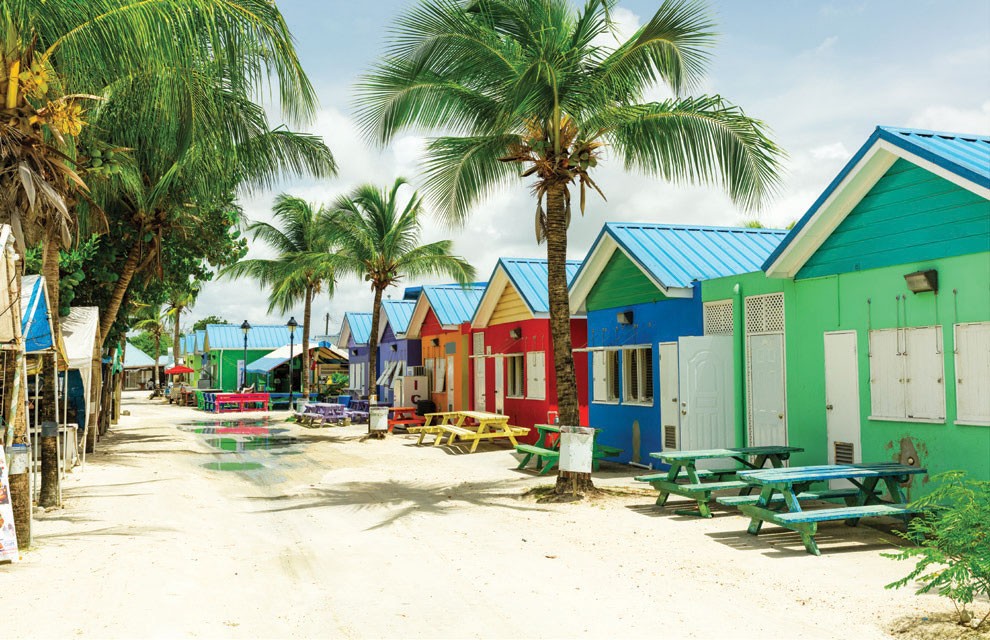 Montenegro Coastline
Montenegro Coastline
Montenegro’s scenic coastline and historic towns are increasingly popular with tourists.
5.3. How does Albania attract tourists with its unique offerings?
Albania attracts tourists with its unique offerings, including its beautiful beaches, historical sites, and affordable prices. Located west of the Balkan Peninsula, on the coast of the Adriatic Sea, Albania offers:
- Affordable Prices: Albania is one of the most affordable travel destinations in Europe, attracting budget travelers and backpackers.
- Beaches: The country boasts numerous beaches with white sand and clean water, making it a popular destination for beach lovers and water sports enthusiasts.
- Historical Sites: Albania features a wealth of historical and archaeological monuments, including the ancient Greek city of Butrint and the medieval Ottoman cities of Gjirokastër and Berat, all of which are UNESCO World Heritage Sites.
- Medical Tourism: Albania is also gaining popularity as a destination for medical tourism, with affordable healthcare options and quality medical facilities.
- Untapped Potential: Compared to other European destinations, Albania remains relatively undiscovered, offering a sense of adventure and authenticity to travelers.
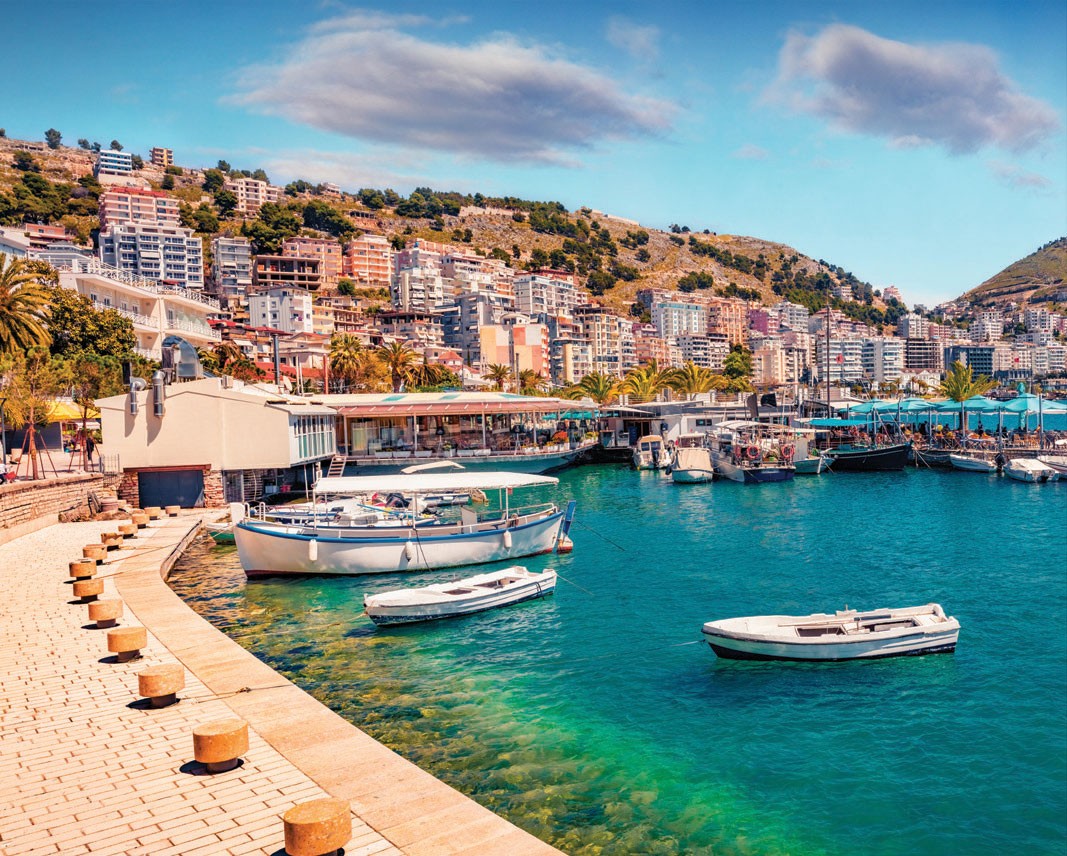 Albania Beach
Albania Beach
Albania’s affordable prices and pristine beaches make it an attractive destination for tourists.
6. Challenges Faced by Tourism-Dependent Countries
Tourism-dependent countries face a range of challenges that can impact their economic stability and social well-being.
6.1. What are the economic vulnerabilities of relying heavily on tourism?
The economic vulnerabilities of relying heavily on tourism include:
- Seasonality: Many tourist destinations experience seasonality, with peak seasons followed by periods of low occupancy and reduced revenue, impacting businesses and employment.
- External Shocks: Tourism is vulnerable to external shocks such as economic recessions, natural disasters, and political instability, which can significantly reduce tourist arrivals and revenue.
- Currency Fluctuations: Currency fluctuations can impact the competitiveness of a tourist destination, making it more or less expensive for visitors from different countries.
- Dependence on Source Markets: Tourism-dependent countries often rely on a few key source markets, making them vulnerable to changes in travel patterns and economic conditions in those countries.
- Competition: The tourism industry is highly competitive, with destinations constantly vying for market share, requiring ongoing investment in marketing, infrastructure, and services.
6.2. How does climate change affect tourism in vulnerable countries?
Climate change poses a significant threat to tourism in vulnerable countries, including:
- Sea Level Rise: Rising sea levels can inundate coastal areas, eroding beaches, damaging infrastructure, and displacing communities, impacting tourism destinations and livelihoods.
- Extreme Weather Events: Increased frequency and intensity of extreme weather events such as hurricanes, cyclones, and floods can disrupt tourism operations, damage infrastructure, and pose risks to tourists and local residents.
- Changes in Ecosystems: Climate change can alter ecosystems, such as coral reefs and rainforests, impacting biodiversity and reducing the appeal of nature-based tourism.
- Water Scarcity: Changes in precipitation patterns can lead to water scarcity in some regions, impacting tourism operations and posing challenges for water management and conservation.
- Increased Health Risks: Climate change can increase the risk of vector-borne diseases such as malaria and dengue fever, impacting tourist health and safety and reducing the appeal of certain destinations.
6.3. How can countries diversify their economies to reduce tourism dependence?
Countries can diversify their economies to reduce tourism dependence by:
- Investing in Education and Training: Investing in education and training programs to develop a skilled workforce capable of participating in diverse sectors of the economy.
- Promoting Innovation and Entrepreneurship: Creating an enabling environment for innovation and entrepreneurship, encouraging the development of new businesses and industries.
- Developing Infrastructure: Investing in infrastructure development, such as transportation networks, energy systems, and communication technologies, to support economic diversification.
- Attracting Foreign Investment: Attracting foreign investment in diverse sectors of the economy, providing capital, technology, and expertise to drive economic growth.
- Promoting Sustainable Development: Promoting sustainable development practices that balance economic growth with environmental protection and social equity, ensuring long-term economic resilience and sustainability.
7. Tourism and Sustainable Development Goals (SDGs)
Tourism plays a significant role in achieving the Sustainable Development Goals (SDGs), contributing to economic growth, social inclusion, and environmental sustainability.
7.1. How does tourism contribute to economic growth (SDG 8)?
Tourism contributes to economic growth (SDG 8) by:
- Generating Income and Employment: Tourism generates income and employment for businesses and individuals, contributing to economic output and livelihoods.
- Attracting Investment: Tourism attracts investment in infrastructure, services, and facilities, stimulating economic activity and creating opportunities for businesses.
- Promoting Entrepreneurship: Tourism promotes entrepreneurship by creating opportunities for small businesses and startups to develop and grow, fostering innovation and economic diversification.
- Supporting Local Economies: Tourism supports local economies by generating revenue for local businesses, creating jobs for local residents, and promoting cultural preservation and community development.
- Contributing to Government Revenue: Tourism contributes to government revenue through taxes, fees, and charges, which can be used to finance public services and infrastructure development.
7.2. How does tourism promote social inclusion (SDG 10)?
Tourism promotes social inclusion (SDG 10) by:
- Creating Employment Opportunities: Tourism creates employment opportunities for people from diverse backgrounds, including women, youth, and marginalized communities, reducing inequality and promoting social inclusion.
- Supporting Local Communities: Tourism supports local communities by generating income for local businesses, promoting cultural preservation, and empowering local residents to participate in tourism planning and decision-making.
- Promoting Cultural Exchange: Tourism promotes cultural exchange and understanding between tourists and local communities, fostering tolerance, empathy, and respect for diversity.
- Enhancing Access to Services: Tourism can enhance access to services such as healthcare, education, and transportation for local communities, particularly in remote or underserved areas.
- Supporting Social Enterprises: Tourism can support social enterprises that address social and environmental challenges, promoting sustainable development and community empowerment.
7.3. How does tourism support environmental sustainability (SDG 15)?
Tourism supports environmental sustainability (SDG 15) by:
- Promoting Conservation: Tourism can promote the conservation of natural resources and biodiversity by generating revenue for protected areas, supporting sustainable tourism practices, and raising awareness about environmental issues.
- Reducing Environmental Impact: Sustainable tourism practices, such as waste reduction, energy conservation, and water management, can minimize the environmental impact of tourism operations.
- Supporting Sustainable Transportation: Tourism can support sustainable transportation options, such as public transit, cycling, and walking, reducing carbon emissions and promoting healthy lifestyles.
- Protecting Cultural Heritage: Tourism can promote the protection of cultural heritage sites and traditions, ensuring their preservation for future generations.
- Promoting Environmental Education: Tourism can promote environmental education and awareness among tourists and local communities, fostering responsible behavior and sustainable practices.
8. Future Trends in Tourism-Dependent Countries
Tourism-dependent countries must adapt to evolving trends and challenges to ensure their long-term sustainability and competitiveness.
8.1. What are the emerging trends in the tourism industry?
The emerging trends in the tourism industry include:
- Sustainable Tourism: Growing demand for sustainable tourism practices that minimize environmental impact, support local communities, and preserve cultural heritage.
- Experiential Travel: Increasing interest in immersive and authentic travel experiences that allow tourists to connect with local cultures, traditions, and communities.
- Digitalization: Rapid adoption of digital technologies, such as mobile apps, online booking platforms, and social media, transforming the way tourists plan, book, and experience travel.
- Personalization: Growing demand for personalized travel experiences that cater to individual preferences, interests, and needs.
- Health and Wellness Tourism: Increasing focus on health and wellness tourism, with travelers seeking destinations and activities that promote physical, mental, and emotional well-being.
8.2. How can technology enhance the tourism experience?
Technology can enhance the tourism experience by:
- Providing Information and Resources: Providing tourists with access to information and resources about destinations, attractions, and activities through websites, mobile apps, and online platforms.
- Facilitating Booking and Planning: Facilitating booking and planning processes through online booking platforms, travel agencies, and virtual tour operators.
- Enhancing Navigation and Wayfinding: Enhancing navigation and wayfinding through GPS-enabled devices, mobile apps, and interactive maps.
- Creating Immersive Experiences: Creating immersive and interactive experiences through virtual reality (VR), augmented reality (AR), and 3D modeling technologies.
- Improving Communication and Connectivity: Improving communication and connectivity through Wi-Fi hotspots, mobile networks, and translation apps.
8.3. What strategies can countries use to adapt to changing tourist preferences?
Countries can use the following strategies to adapt to changing tourist preferences:
- Investing in Sustainable Tourism Practices: Investing in sustainable tourism practices that minimize environmental impact, support local communities, and preserve cultural heritage.
- Developing Authentic Experiences: Developing authentic and immersive travel experiences that allow tourists to connect with local cultures, traditions, and communities.
- Leveraging Digital Technologies: Leveraging digital technologies to enhance the tourism experience, providing tourists with access to information, facilitating booking and planning, and improving communication and connectivity.
- Personalizing Travel Experiences: Personalizing travel experiences to cater to individual preferences, interests, and needs.
- Promoting Health and Wellness Tourism: Promoting health and wellness tourism, with destinations and activities that promote physical, mental, and emotional well-being.
9. The Role of Government and Policy in Tourism
Government and policy play a crucial role in shaping the tourism sector and ensuring its sustainable development.
9.1. What policies can governments implement to support tourism?
Governments can implement various policies to support tourism, including:
- Developing National Tourism Strategies: Developing national tourism strategies that set out clear objectives, priorities, and action plans for the tourism sector.
- Investing in Infrastructure: Investing in infrastructure development, such as airports, roads, and utilities, to support tourism growth and improve accessibility.
- Providing Incentives and Support: Providing incentives and support to tourism businesses, such as tax breaks, subsidies, and grants, to encourage investment and innovation.
- Promoting Marketing and Branding: Promoting marketing and branding campaigns to attract tourists and enhance the destination’s image and reputation.
- Ensuring Safety and Security: Ensuring the safety and security of tourists through effective law enforcement, emergency response services, and public safety campaigns.
9.2. How can governments promote sustainable tourism practices?
Governments can promote sustainable tourism practices by:
- Establishing Regulations and Standards: Establishing regulations and standards for tourism businesses to ensure compliance with environmental and social safeguards.
- Providing Training and Education: Providing training and education programs for tourism businesses and employees to promote sustainable practices and responsible behavior.
- Supporting Certification Programs: Supporting certification programs that recognize and reward tourism businesses that meet sustainability standards.
- Promoting Eco-Tourism: Promoting eco-tourism and nature-based tourism that minimizes environmental impact and supports local communities.
- Engaging Stakeholders: Engaging stakeholders, including tourism businesses, local communities, and environmental organizations, in the development and implementation of sustainable tourism policies.
9.3. How can international cooperation enhance tourism development?
International cooperation can enhance tourism development by:
- Sharing Knowledge and Best Practices: Sharing knowledge and best practices in tourism planning, development, and management among countries.
- Providing Technical Assistance: Providing technical assistance to developing countries to build capacity and improve tourism infrastructure and services.
- Promoting Joint Marketing Campaigns: Promoting joint marketing campaigns to attract tourists from around the world.
- Facilitating Visa and Travel Arrangements: Facilitating visa and travel arrangements to encourage tourism and reduce barriers to travel.
- Addressing Global Challenges: Addressing global challenges such as climate change, pandemics, and security threats that can impact tourism development.
10. Traveling to Vietnam: A Rich Cultural Experience
For travelers seeking a blend of natural beauty and cultural richness, Vietnam stands out as a compelling destination.
10.1. Why should you choose Vietnam as your next destination?
Vietnam offers a unique blend of attractions:
- Rich History and Culture: Vietnam boasts a rich history and culture, with ancient temples, bustling markets, and vibrant festivals that offer a glimpse into its fascinating past.
- Stunning Landscapes: From the rice terraces of Sapa to the beaches of Phu Quoc, Vietnam offers a diverse range of landscapes that cater to different interests and activities.
- Delicious Cuisine: Vietnamese cuisine is renowned for its flavors, spices, and culinary traditions, attracting food lovers from around the world.
- Affordable Prices: Vietnam offers affordable travel options, making it a popular destination for budget travelers and backpackers.
- Friendly People: Vietnamese people are known for their hospitality and friendliness, welcoming visitors with warmth and kindness.
10.2. What are the must-see attractions in Vietnam?
Must-see attractions in Vietnam include:
- Hanoi: The capital city of Vietnam, Hanoi is known for its Old Quarter, Hoan Kiem Lake, and Temple of Literature.
- Ha Long Bay: A UNESCO World Heritage Site, Ha Long Bay is famous for its stunning limestone karsts and emerald waters.
- Hoi An: A historic trading port, Hoi An is known for its well-preserved architecture, tailor shops, and delicious street food.
- Ho Chi Minh City: The largest city in Vietnam, Ho Chi Minh City is known for its vibrant nightlife, French colonial architecture, and war museums.
- Sapa: A mountain town in northern Vietnam, Sapa is known for its stunning rice terraces, ethnic minority cultures, and hiking trails.
Ha Long Bay, Vietnam’s iconic landscape, attracts tourists with its stunning limestone karsts.
10.3. How can SIXT.VN enhance your travel experience in Vietnam?
SIXT.VN offers a range of services to enhance your travel experience in Vietnam:
- Airport Transfers: Convenient and reliable airport transfer services to ensure a smooth arrival and departure.
- Hotel Bookings: A wide selection of hotels to suit different budgets and preferences.
- Tour Packages: Customized tour packages that cater to different interests and activities.
- Flight Bookings: Assistance with flight bookings to ensure hassle-free travel arrangements.
- Travel Advice: Expert travel advice and recommendations to help you plan your trip.
SIXT.VN understands the challenges travelers face when planning a trip to a new country. Language barriers, navigating unfamiliar transportation systems, and finding reliable services can be daunting. That’s why SIXT.VN is dedicated to providing comprehensive support, ensuring a seamless and enjoyable travel experience.
Ready to explore the beauty of Vietnam? Let SIXT.VN take care of your travel needs. Visit SIXT.VN today and discover our exclusive travel packages, airport transfer services, and more.
FAQ: Countries Reliant on Tourism
1. Which country is most dependent on tourism?
The Maldives is the country most dependent on tourism, with tourism revenue accounting for 68% of its GDP in 2022. This is due to its stunning natural beauty, luxury resorts, and unique geography.
2. Why are island nations more reliant on tourism?
Island nations often have smaller, less diversified economies and abundant natural attractions, such as beaches and coral reefs, making them heavily reliant on tourism for income and employment. Their economies are also often structured in such a way that tourism is the most viable industry.
3. How does tourism benefit a country’s economy?
Tourism benefits a country’s economy by generating income for businesses, creating jobs, attracting investment in infrastructure and services, and promoting entrepreneurship. It also serves as a major source of foreign exchange earnings.
4. What are the negative impacts of tourism on local communities?
Negative impacts of tourism on local communities include environmental degradation, cultural commodification, economic leakage, social disruption, and overcrowding. These can affect the quality of life for residents and damage the environment.
5. How can countries reduce their dependence on tourism?
Countries can reduce their dependence on tourism by diversifying their economies, investing in education and training, promoting innovation and entrepreneurship, and attracting foreign investment in diverse sectors.
6. What role does sustainable tourism play in economic development?
Sustainable tourism can mitigate the negative impacts of tourism and promote economic development by ensuring that tourism benefits local communities, preserves cultural heritage, and protects the environment.
7. How does climate change affect countries that rely on tourism?
Climate change poses a significant threat to tourism in vulnerable countries through sea-level rise, extreme weather events, changes in ecosystems, water scarcity, and increased health risks. These issues can deter tourists and damage infrastructure.
8. What are the emerging trends in the tourism industry?
Emerging trends in the tourism industry include sustainable tourism, experiential travel, digitalization, personalization, and health and wellness tourism. These trends are shaping tourist preferences and behaviors.
9. How can technology enhance the tourism experience?
Technology enhances the tourism experience by providing information and resources, facilitating booking and planning, enhancing navigation and wayfinding, creating immersive experiences, and improving communication and connectivity.
10. What is the role of government in supporting sustainable tourism?
Governments play a critical role in supporting sustainable tourism through policies, regulations, incentives, and collaborations to ensure the tourism sector benefits both visitors and local communities while protecting the environment.



